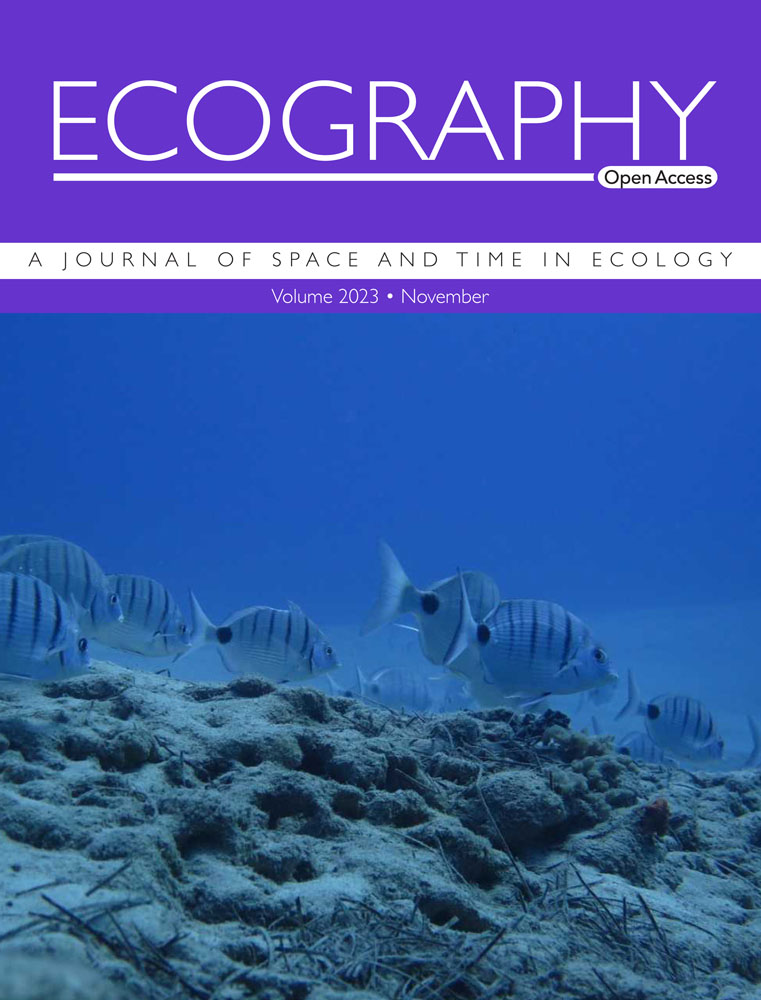A zoogeographic model for the evolution of diversity and endemism in Madagascar
IF 5.4
1区 环境科学与生态学
Q1 BIODIVERSITY CONSERVATION
引用次数: 0
Abstract
The delineation of zoogeographic regions is essential for understanding the evolution of biodiversity. Madagascar, characterized by high levels of endemism and habitat diversity, presents unique challenges and opportunities for such studies. Traditional global zoogeographic classifications, largely based on vertebrates, may overlook finer‐scale patterns of diversity. This study employs comprehensive ant distribution and phylogenomic datasets to propose a refined zoogeographic model for Madagascar. Utilizing phylogenetic Simpson's turnover, we identified three primary regions – Eastern, Northern, and Western – each characterized by distinct environmental and phylogenetic profiles. Further subdivision revealed nine subregions, reflecting variations in elevation, net primary productivity, and terrain ruggedness. Our findings highlight the importance of topographical and environmental barriers in shaping phylogenetic diversity and endemism. Notably, we observed significant phylogenetic clustering in lowland areas and distinct differences in net primary productivity and elevation across regions. This study underscores the value of integrating phylogenetic data in zoogeographic analyses and provides a nuanced framework for investigating biodiversity patterns in Madagascar, offering insights into the processes driving speciation and endemism on the island.求助全文
约1分钟内获得全文
求助全文
来源期刊

Ecography
环境科学-生态学
CiteScore
11.60
自引率
3.40%
发文量
122
审稿时长
8-16 weeks
期刊介绍:
ECOGRAPHY publishes exciting, novel, and important articles that significantly advance understanding of ecological or biodiversity patterns in space or time. Papers focusing on conservation or restoration are welcomed, provided they are anchored in ecological theory and convey a general message that goes beyond a single case study. We encourage papers that seek advancing the field through the development and testing of theory or methodology, or by proposing new tools for analysis or interpretation of ecological phenomena. Manuscripts are expected to address general principles in ecology, though they may do so using a specific model system if they adequately frame the problem relative to a generalized ecological question or problem.
Purely descriptive papers are considered only if breaking new ground and/or describing patterns seldom explored. Studies focused on a single species or single location are generally discouraged unless they make a significant contribution to advancing general theory or understanding of biodiversity patterns and processes. Manuscripts merely confirming or marginally extending results of previous work are unlikely to be considered in Ecography.
Papers are judged by virtue of their originality, appeal to general interest, and their contribution to new developments in studies of spatial and temporal ecological patterns. There are no biases with regard to taxon, biome, or biogeographical area.
 求助内容:
求助内容: 应助结果提醒方式:
应助结果提醒方式:


